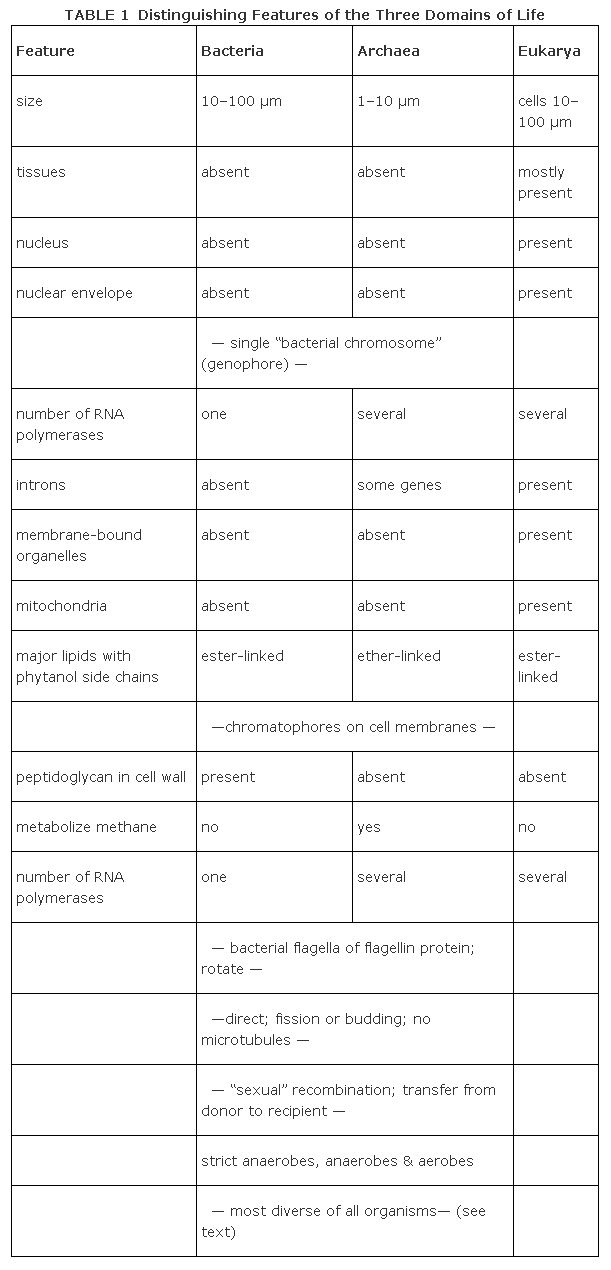General Characteristics of Prokaryotes
The prokaryotes are the most abundant organisms on Earth, and their biomass undoubtedly outweighs all the rest of the organisms together. Although they are too small to be seen individually without powerful magnification, they and the results of their activities are everywhere; without them life on Earth would cease. They have persisted for 3.5 billion years exploiting every possible inorganic and organic habitat—the first 2 billion years alone with no other kinds of organisms. In so doing, they have evolved ways to make a living in each. They manage by being metabolically diverse, morphologically small, cellularily simple, and genetically versatile. They are the dispersers and the recyclers of the Earth's materials and great parts of the human economy depend upon either finding ways to make use of the prokaryotes or ways to get rid of them. Table summarizes the basic features that separate the three domains of life.
.

The division of the prokaryotes into two domains poses many problems, not the least of which is the inclusiveness of the name “bacteria.” Technically, “bacteria” aren't all of the old “bacteria;” when used appropriately today the fascinating extremophiles are excluded by the term. Some microbiologists suggest the use of “Eubacteria” (eu = true) as a domain and common name to distinguish one specific group, but the practice is not universally accepted. Some clarification may be necessary, therefore, in using—and interpreting others' use—of the word “bacteria”.